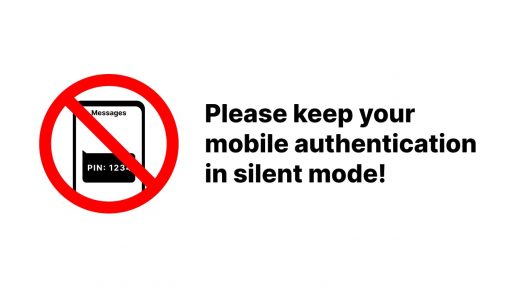Not only is it one of the most frequent types of fraud users experience, but it also means major costs, both in direct and implied losses. Today, I’ll address ways you can prevent fraud at the point of subscription.
The number of mobile users around the world is constantly rising, which means mobile network operator (MNO) businesses are flourishing. I can tell you this: 62% of the world’s population owns a mobile phone. In first-world countries, this number is much higher, and global growth shows no signs of stopping anytime soon. To give you an example, we’ve had a 40% increase in the number of smartphone users over the last four years only.
Suffice it to say that with that kind of market penetration, MNOs have their work cut out for them in fighting fraud, which has been growing in direct correlation with the number of users.
To give you some solid numbers, the fraud losses for MNOs grew an unfortunate 37% between 2017 and 2019, all the way to USD $28.3 billion. And the fraud methods?
The main ones used range from payment fraud to various call-back schemes. However, the one that frequently tops the list — and the one I’ll be addressing in this article — is subscription fraud.
Let’s start from the beginning by defining subscription fraud, and then move on to all the considerations that come with it.
Subscription fraud: the gateway to subsequent mobile ID fraud
Subscription fraud is a kind of point-of-sale fraud where perpetrators rely on stolen or completely fabricated identities to open a mobile account, aiming to either avoid paying for the device and services or use the account for subsequent fraud.
How does this happen?
Upon opening the account, the user is asked to provide ID document, as well as some other proof of identity and credit capability. That’s when fraudsters present forged documents, which are checked manually more often than not. The result? Successful fraud.
Moreover, the opening of accounts is now being increasingly digitized. This means users are often asked to provide their scanned ID in combination with a high-resolution facial photo for verification purposes. It’s not hard to see how this process could be a security fail, too.
When cyber criminals succeed in opening an account, they also open up a lot of room for other kinds of fraud.
Given that many operators offer subsidized mobile devices along with subscriptions, fraudsters frequently decide to simply re-sell the device, but this is only the least costly fraud scheme they can commit.
Perpetrators also have the ability to open mobile bank accounts and fintech app accounts, as well as applying for credit cards, etc.
From the MNO side, it takes time to detect this type of fraud and close the account, since these accounts usually go through certain phases of being flagged before actual termination.
By the time the accounts are closed, fraud perpetrators will usually already have completed their schemes and operators will have already incurred losses, sometimes up to 10% of their bottom line. As if that wasn’t enough, these security breaches might reflect poorly on their brand image, resulting in erosion of user trust.
Stopping fraud at the get-go to protect brand image
Mobile network operators hold our personal data and provide the service through which we conduct sensitive every-day matters such as bank transactions, so it’s only logical that user trust is one of the most important — if not the most important — brand image features.
When fraudsters successfully trick MNOs, apart from the direct losses, the MNOs risk losing that trust from both their business clients, such as banks or fintechs, and individual users. This further endangers their revenue streams.
So, what’s the most effective solution?
Nipping fraud in the bud and stopping perpetrators at the point of subscription. When MNOs manage to do this, they can protect themselves from the cost of, say, a subsidized device — but more importantly, the perpetrator is denied the chance to carry out other, more damaging fraud schemes.
Now, this is not to say that it’s realistic to expect to eliminate all fraud. You and I both know that would be practically impossible. That being said, minimizing it by improving point-of-sale checks and securing customer accounts might be difficult, but it’s nowhere near impossible.
As a matter of fact, it’s just what we are here to work on together.
Know your customer AND protect your customer
The biggest task that MNOs face is filtering for the right solutions to lower the risks and losses for everyone involved — their company, other corporations, and individual users.
The most effective method for accomplishing this is to address fraud attempts at the point of subscription. In addition to banks, know-your-customer (KYC) protocols are proving to be increasingly important for mobile network operators.
By strengthening KYC protocols at the point of subscription, MNOs canmore precisely verify that their potential customer is truly who they say they are.
As I’ve previously discussed with you, updating and standardizing KYC is one of the most effective strategies we can employ to minimize mobile ID fraud. If we add secure and seamless authentication to the equation, we’ll be well on our way to perfecting the mobile ID concept.
With improved KYC, MNOs get to protect themselves from any direct costs, as well as other costs brought on by eroded corporate and user trust — but the job doesn’t end there.
To protect themselves from other types of fraud, MNOs have to make sure to select the right authentication, verification, and fraud prevention technologies. If you ask me, the best route for them to take is to use solutions that leverage the capabilities of their existing technological infrastructure, which is precisely how we’ve developed IPification.
IPification authenticates users through a patented technology called the GMID-BOX, which the operators can simply install on their networks. This enables you to generate a hashed mobile ID unique to each user, each device, and each service.
Our solution is capable of running seamlessly in the background while detecting and preventing fraud attempts — including the infamous SIM swap.
Furthermore, IPification recognizes the importance of frictionless user experience and authenticates users within milliseconds and with a single tap.
Best of all, it can be integrated within days!
Do you want to know more? Let’s talk.



